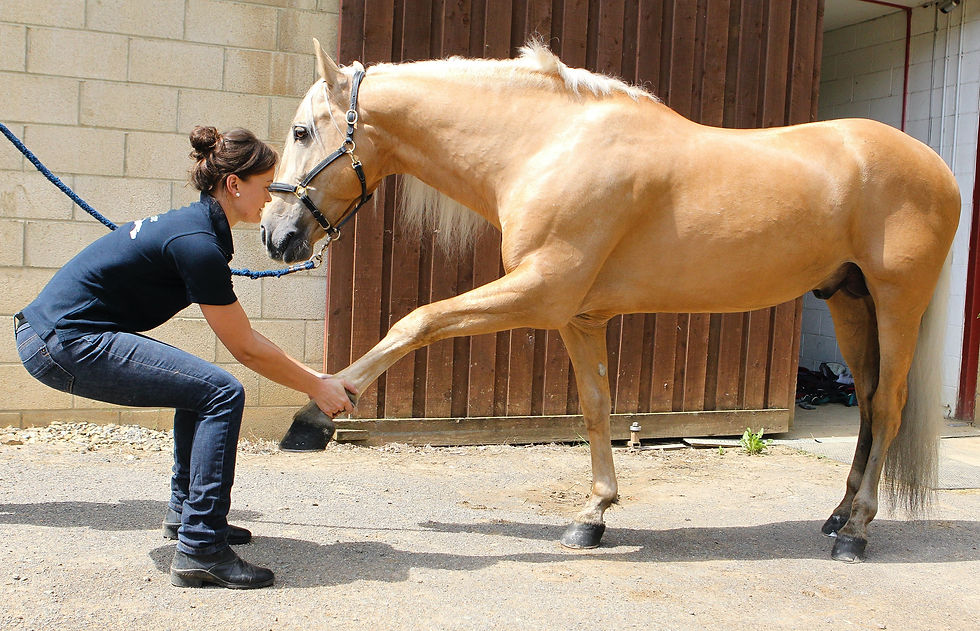The Gentle Giant: Why Every Horse Needs a Team
- Nika Vorster
- Jul 9
- 2 min read

He was huge—17.2h and only 6 years old. A gentle giant. Like an oversized Labrador.The sweetest temperament and just seeking love in the company of humans.
I’m now in Australia and was asked to assess this big young horse, as his owner was concerned about a few things.Despite taking the training really slow—only starting him under saddle at 4 and focusing on a lot of walk, water, and stability exercises—the farrier was concerned about his front feet, and the owner kept noticing his lack of push from behind.
Have you ever owned or ridden a horse like this? I’d love to hear your experience—drop a comment below.
Horses are like a puzzle piece; there is never just one “problem” or weakness. The body is connected, and with horses being on four legs, when there is a weakness in the front feet, the shoulders, neck, back, and pelvis will be affected or compensating.
This approach—assessing the horse as a whole—can be overwhelming. The more I study anatomy, I’m left thinking, gosh, I don’t know anything!
Assessing a horse is one of my favourite things. This is where I use the AAA approach—watching, observing, listening, using as many senses as I can tune in to, to help bring the horse and his body patterns to life. This is my goal.
Ask. I used to get frustrated when going to the vet and being told that a horse has hock arthritis and needs an injection, with no explanation or aftercare. To overcome this, the second A in the AAA approach can be used—Ask as many questions as possible. This also sparks curiosity, which is a better state than feeling frustrated and lost.
Adjust. The third A comes into play when, based on the history, observation, and asking a LOT of questions, a body pattern shines through. Now it’s time to make small changes and watch the horse’s behaviour.
The pattern this gelding presented was a bilateral (both) pelvic girdle dysfunction, which in my opinion was causing the front feet issues—because he was loading more through the front to help his huge frame.
The next step was a conversation with the vet, farrier, and myself to discuss the next steps. Helping horses is a team approach. I’m not an expert in farriery, therefore working with an open-minded farrier is a must.The same goes for a dentist. Would you go and get your teeth done by a GP? NO!The same goes for our horses—a qualified dentist who is an expert is the key to ensuring your horse is receiving the best care, and you don’t end up wasting time and money.
This is why I created the AAA approach—to honour the horse’s voice, build collaboration, and support whole-body healing.
Was this helpful? Let me know your thoughts in the comments—I read and reply to every one.



Comments